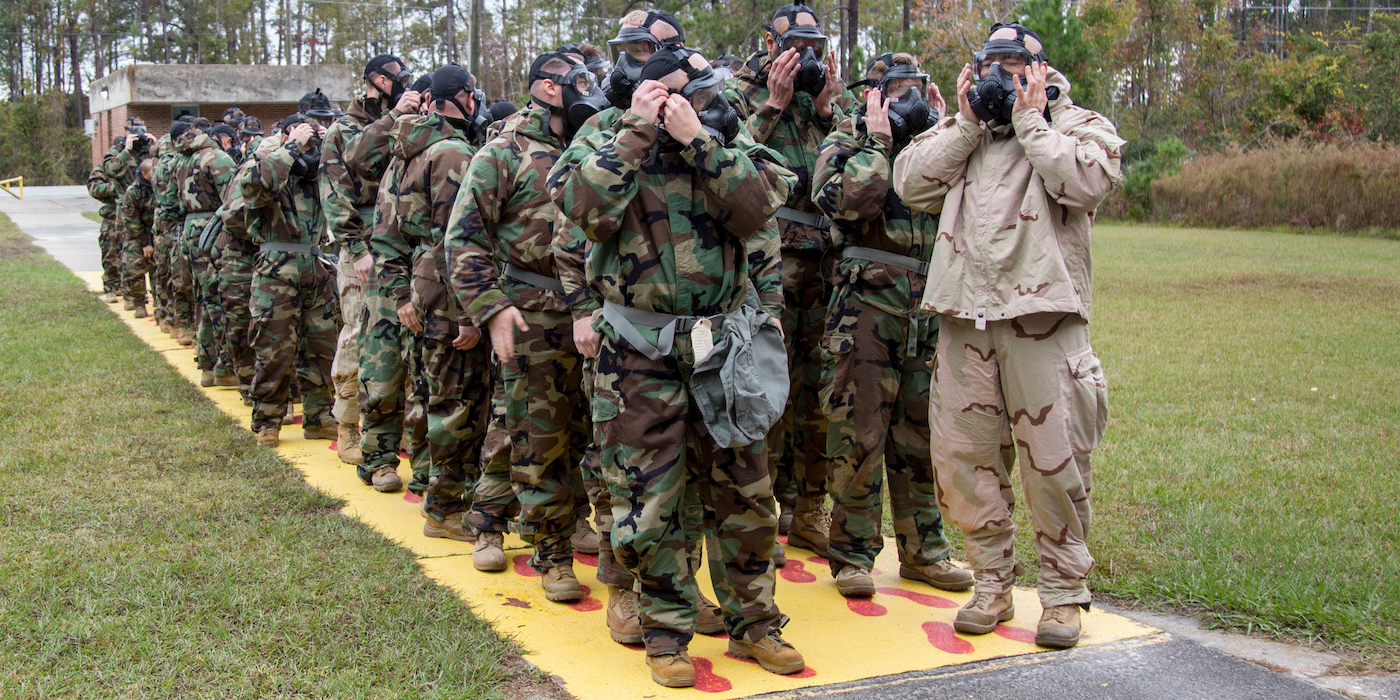- US Marines at Camp Lejeune in North Carolina went through gas-chamber training earlier this month.
- The Marines were ushered into a small, dark, brick room with a sign above the door: “Even the brave cry here.”
- Visit Business Insider’s homepage for more stories.
A sign hanging above the doors to the gas chamber reads, “Even the brave cry here.” A dozen at a time, Marines are ushered into a small, dark, brick room. A thick haze of o-Chlorobenzylidene Malononitrile, more commonly known as CS gas, fills the air.
Marines with Deployment Processing Command, Reserve Support Unit-East (DPC/RSU) and the 26th Marine Expeditionary Unit, conducted gas chamber training November 8, 2019, on Marine Corps Base Camp Lejeune, North Carolina.
“During qualification, which can take about four to five hours, Marines are taught nuclear biological and chemical (NBC) threats, reactions to NBC attacks, how to take care of and use a gas mask, how to don Mission-Oriented Protective Posture gear, the process for decontamination, and other facts relating to NBC warfare,” said Cpl. Skyanne Gilmore, Chemical, Biological, Radiological and Nuclear (CBRN) specialist with the 26th MEU.
“The gas chamber training teaches Marines how to employ gas masks in toxic environments, and to instill confidence with their gear during CBRN training. Training in the gas chamber is essential because a service member can never know when they could be attacked,” Gilmore said.

According to Gunnery Sgt. James Kibler, Alpha Company operations chief with DPC/RSU, the unit conducts gas chamber training once a month due to the rotation of service members preparing for deployment.
The 26th MEU was training to complete Marine Corps Bulletin 1500, a biennial requirement for active-duty Marines.
With the enemy not having a clear or visual face, or wearing any organized uniform, it's critical Marines be mission ready in case of chemical attacks.

During the training, CBRN Marines monitor individuals who may be struggling in the gas chamber.

"We calmly talk to them, and we take them step by step of what to do," Gilmore said. "If they're freaking out, we have them look at us and breathe. If we have to, we pull them out of the gas chamber and let them take their mask off and get a few more breathes before we send them back in there so they can calm down and realize they're breathing normally."
Having confidence in one's gear and checking it over twice before going inside helps individuals from losing their composure in the gas chamber.

"Check the seal on your mask and the filters before going inside," said Gilmore. "When you feel like freaking out, take a breath and realize that you're not breathing in any CS gas. You should have confidence in yourself and your gear."
Due to the rise in chemical attacks, proper training in the gas chamber could save a service member's life.

"Throughout Iraq, there have been pockets of mustard gas and a couple other CBRN-type gases that have been found, especially within underground systems," Kibler said.
"I know that when I was there in 2008, a platoon got hit with mustard gas when they opened up a Conex box. The entire platoon was able to don their masks. Gas attacks are out there; it might not be bombs, but it's out there somewhere."
